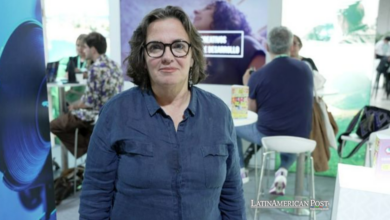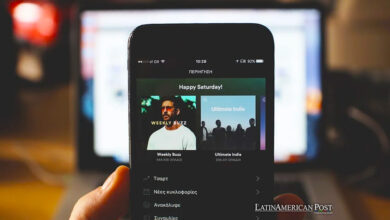Reviving Forgotten Mexican Classical Music Through Modern Platforms

Mexican pianist Argentina Durán is trying to revive and popularize forgotten Mexican classical compositions. She uses social media and innovative technology to place these works alongside European classics.
Despite the richness and complexity of Mexican classical music, many of its masterpieces remain largely forgotten. This neglect persists even though these compositions often rival celebrated European composers. Mexican pianist Argentina Durán is dedicated to changing this narrative, urging fellow musicians and audiences to embrace their cultural heritage.
In a recent interview with EFE, Durán expressed her concern about the underrepresentation of Mexican classical music in contemporary repertoires. “There are many works that are unknown; almost nobody wants to play them for some reason,” Durán remarked. “Mexicans tend to explore their repertoire less compared to European composers. We are responsible for promoting our art alongside those composers.”
Durán, originally from Veracruz, visited Guadalajara before her May 25th concert with the Orquesta Solistas de América. She emphasized the existence of high-quality Mexican compositions that remain obscure. Her latest album, Rapsodia Mexicana, is a testament to this mission. The album features a previously unrecorded piece by indigenous composer Jesús Corona, whose complex and technically demanding work Durán discovered in the National Sound Archive.
The historical context of Jesús Corona’s work is particularly notable. In an era dominated by Creole and Spanish composers, Corona’s compositions stand out for their technical difficulty and rich arpeggios, reminiscent of Franz Liszt. This complexity likely contributed to the lack of prior recordings. Durán’s album also includes pieces by José Rolón, Manuel M. Ponce, Alfredo Carrasco, and Veracruz natives Alejandro Corona and Mario Ruiz Armengol.
Moreover, Rapsodia Mexicana is groundbreaking as the first Mexican classical music album designed and recorded in Dolby Atmos. This immersive sound technology creates a listening experience that places the audience as if they are right beside the piano, enhancing the appreciation of these intricate compositions.
Bringing Classical Music to the Digital Age
Durán, who serves as the principal pianist of the National Symphony Orchestra, has not confined her efforts to concert halls and recording studios. During the pandemic, she turned to social media, particularly TikTok, to share her passion for classical music. Her innovative approach has garnered nearly half a million followers, primarily young people, who now attend her concerts in droves.
“Breaking many stereotypes and prejudices, I consider myself a pioneer in bringing classical music to social media, at least in Mexico and Latin America,” Durán stated. This digital engagement has led to unprecedented cultural movements, with young audiences flocking to classical music concerts at Bellas Artes and quickly selling out tickets—a rare occurrence for the genre.
Durán believes that social media is a powerful tool for popularizing classical music, which has long been perceived as an art form for connoisseurs or the elite. “Many musicians may not have known how to take advantage of the technologies we have at this moment,” she explained. “We are at a historic opportunity to spread our genre, which has perhaps been within a prejudice that it is only for certain social strata or older people or that it is boring.”
Her success on social media demonstrates how these platforms can break down barriers and make classical music accessible to a broader audience. By leveraging digital tools, Durán has reached people who might never have encountered classical music otherwise.
A Historical Perspective
The marginalization of Mexican classical music can be traced back to colonial times when European cultural norms dominated. This historical context has left a lasting impact, with many Mexican musicians and audiences still prioritizing European composers over their national counterparts. However, Mexican composers have a rich heritage of blending indigenous, mestizo, and European influences to create unique and mighty works.
Composers like Manuel M. Ponce and José Rolón have made significant contributions to classical music, yet those of European composers often overshadow their works. Efforts to promote Mexican classical music must contend with these deep-seated biases and work towards a more inclusive appreciation of the genre.
Education and media are crucial in changing perceptions and fostering a greater appreciation for Mexican classical music. Incorporating these works into music curricula and public broadcasting can highlight their importance and beauty. Additionally, collaborations between Mexican and international artists can bring greater visibility to these compositions.
Durán’s work exemplifies how contemporary musicians can bridge the gap between tradition and modernity. By using cutting-edge technology like Dolby Atmos and engaging with audiences through social media, she sets a new standard for how classical music can be experienced and appreciated in the 21st century.
Upcoming Performances and Future Plans
On May 25th, Durán will perform with the Orquesta Solistas de América at the Conjunto de Artes Escénicas in Guadalajara. This concert is part of her ongoing efforts to bring Mexican classical music to the forefront. Her performances are not just about playing music but about storytelling and cultural reclamation, ensuring that these forgotten pieces find their place in the global classical music repertoire.
Durán’s plans include more recordings of Mexican composers, continued engagement with her social media followers, and educational initiatives to introduce classical music to young audiences. She hopes that her efforts will inspire other musicians to explore and promote their national repertoire, fostering a greater appreciation for the rich cultural heritage of Latin America.
Argentina Durán’s dedication to reviving and promoting Mexican classical music is vital to preserving and celebrating the region’s cultural heritage. She is breaking down barriers by leveraging modern technology and social media and making this music accessible to a new generation. Her work reminds us that classical music is not a relic of the past but a living, evolving art form that can resonate deeply with audiences today.
Also read: Conexión Buenos Aires: Bridging Argentine Culture with the World
As Latin America continues to navigate its complex cultural landscape, the efforts of musicians like Durán are crucial. They ensure that the region’s rich musical traditions are preserved, celebrated, and integrated into the broader tapestry of classical music. Through her innovative approach and unwavering commitment, Durán is helping to secure a future where Mexican classical music is recognized and cherished worldwide.




